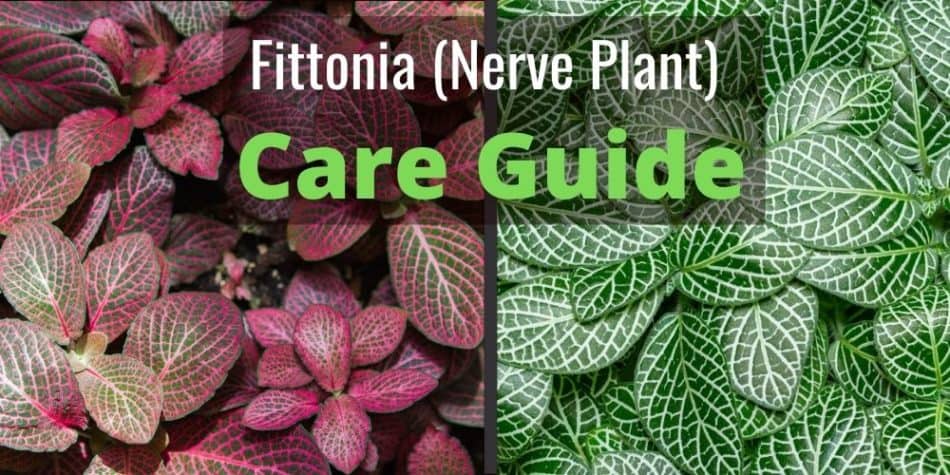Fittonias, also known as Nerve Plants, are beautiful house plants with some of the most beautiful leaf coloration of any indoor plant. However, this beauty comes with a price since these plants can sometimes be finicky to care for.
You may notice that your fittonia will start showing signs of stress such as the leaves curling, yellowing, and even falling off. So why are your fittonia leaves showing signs of stress?
Fittonias are naturally found in jungles so they prefer warm, humid environments with lots of indirect sunlight. Common reasons for an unhappy fittonia plant are lack of water, low humidity, drafts or air vents, and direct sunlight. These common issues can be resolved by watering the plant more, using a pebble tray, and placing the plant in an area with bright indirect sunlight.
Thankfully this is a hardy plant that can bounce back when properly cared for.
Let’s cover the common issues and solutions for your plant so we can bring the fittonia back to it’s beautiful self.
Where Fittonia Naturally Live
Native to rain forests, nerve plants (understandably) love very warm, humid environments with lots of indirect sunlight. This makes sense since these plants naturally grow underneath the tree canopy in a steamy tropical forest.
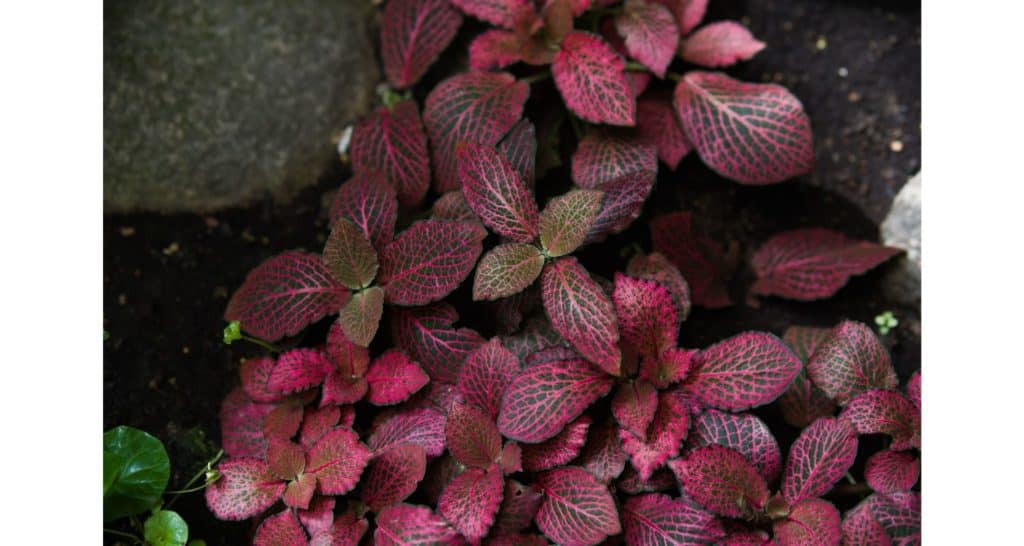
So we want to recreate their ideal environment. These plants do best when they are indoors in temperature controlled spaces that stay between 65°F and 85°F with lots of humidity.
Anytime these plants are subjected to wild temperature swings or moisture issues they react pretty negatively.
Gardeners sometimes refer to fittonias as being dramatic plants since they can show signs of stress with slight changes in their environment.
Knowing the ideal environment for fittonias is important since we can figure out why the plant is showing certain signs of stress.
Fittonia Plant Is Wilting
If the plant and the leaves are both drooping then this is a sign of under or overwatering.
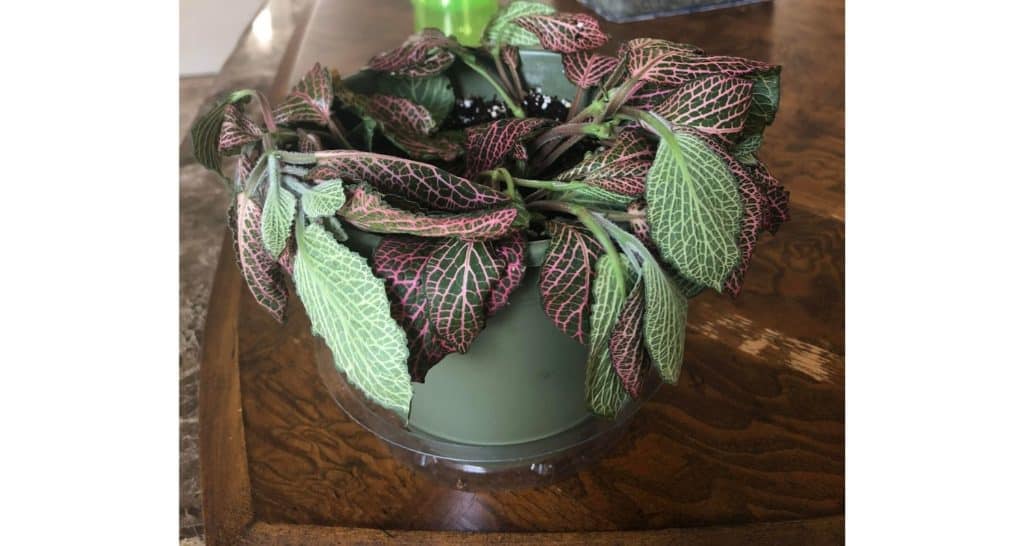
The first step is to insert your finger into the soil up to your second knuckle and feel for any moisture.
If the soil is dry then you need to thoroughly water the plant. Be sure to have the plant in a pot with proper drainage so you can water your plant until water drips out the bottom. This ensures the roots will get the moisture they need.
If the soil is wet then chances are the plant is being overwatered. Although this place does enjoy rain forest conditions, it still needs time to dry out in between waterings.
If your soil moisture is not too wet and not too dry but your plant is still wilting then try misting your plant. These plants need high humidity so a good mist can perk this plant straight up.
Curling Leaves on Fittonia
Fittonias will have curling leaves when there is a lack of humidity, too much direct light, or pests such as aphids. Curling leaves is a sign that there is not enough moisture in the plant’s leaves.
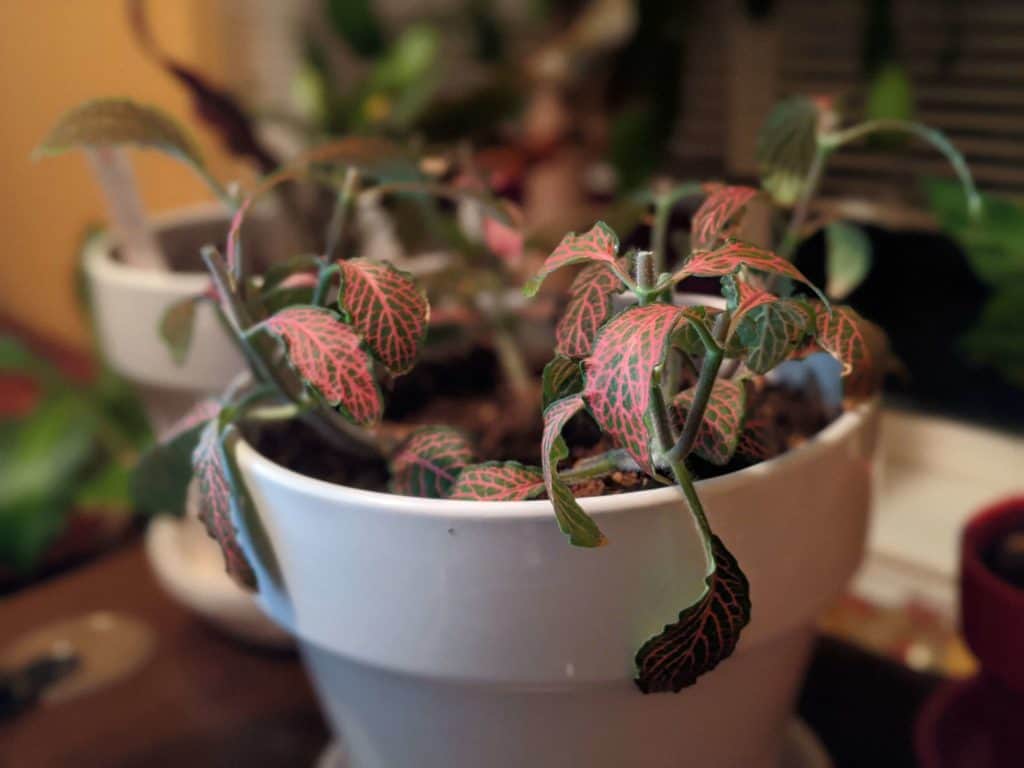
You can mist the plant’s leaves and place a glass dome / plastic bag over the plant. This will create a high humidity environment for your nerve plant which should uncurl the leaves.
Another option is to move the plant out of direct sunlight into an area that has bright indirect sunlight. This plant does not like to sit directly in the sun which can cause the leaves to dry out and curl.
Finally check the plant for pests since aphids and spider mites can suck the moisture out of the plant’s leaves.
Always keep this plant out of drafty areas and away from heater vents since these plants will dry out and respond negatively.
Crispy Fittonia Leaves
When the leaves dry out further then they can appear brown and feel crispy. This means that the fittonia is not being watered enough and the air is not humid enough.
This is the perfect storm for a very unhappy fittonia. Typically the damaged leaves will first turn yellow, then brown and eventually fall off.
Some potential options to solve this issue are to water the plant more, mist the plant’s leaves, and place this plant in a high humidity environment.
A terrarium is the perfect environment for this plant since it is an enclosed growing area that has high humidity. However, if you don’t have a terrarium to place this plant in then try using a pebble tray instead.
Fittonia Leaves Turning Yellow, Brown, And Falling Off
Fittonia leaves that are drooping and curling are the first signs that the plant is having issues. Typically with watering and humidity.
When the fittonia plant has yellow, brown, or falling leaves then the plant needs immediate help to save it. These are signs that the plant is very stressed and is not receiving the things it needs to survive.
The first step is to determine whether the plant has been over or under watered. First insert your finger into the soil up to the second knuckle and measure the moisture.
If the soil feels wet then this plant has been overwatered for a long period of time and needs to dry out. You may need to repot the plant in order to dry out the roots before they start developing root rot.
If the soil feels dry then this plant has been underwatered and needs to be watered in a high humidity environment. You can either mist the plant’s leaves or place this plant over a pebble tray to increase the humidity.
Simple DIY Humidifier: Pebble Tray
Pebble trays are a simple and effective solution to providing more humidity to plants. A pebble tray is exactly what it sounds like – a tray full of pebbles.
Most house plants, including fittonias, are tropical plants that can grow better in a humid environment.
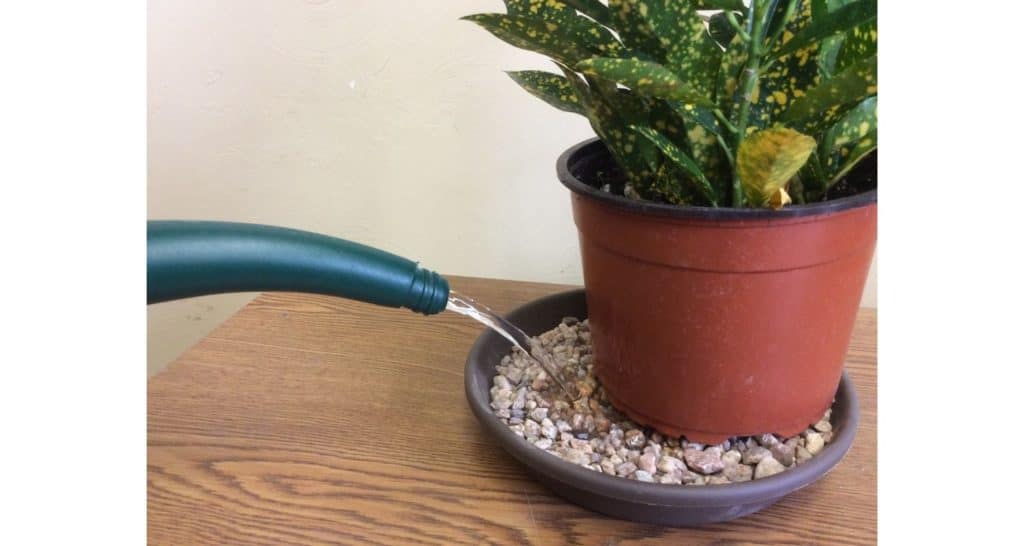
In order to make a pebble tray:
- Select a shallow tray that is larger than the base of the plant’s pot
- Fill the tray with a single layer of pebbles
- Add water so it rises to about halfway up the rocks
That’s it! You have now created a simple but effective pebble tray for increasing humidity.
Next just place your plant on top of the pebbles and add water to your tray if it ever dries out.
Conclusion
The fittonia is a beautiful but finicky plant that needs high humidity environments with bright indirect sunlight. Most homes can provide bright indirect sunlight but the high humidity can be challenging.
Thankfully there are ways to increase the humidity for your plant by misting the leaves or using a pebble tray. This should help with common leaf stress issues such as curling and crisping.
Now your fittonia should have the best environment to grow in so you can enjoy its colorful leaves for years to come.

